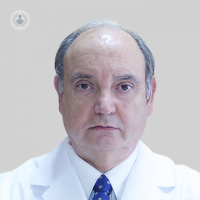All you need to know about the brain aneurysm
Written by:A cerebral aneurysm is a dilatation of an artery wall mainly due to a structural alteration of the same, leading to thinning and consequently a possible rupture, resulting in a brain hemorrhage known as subarachnoid hemorrhage.
Cerebral aneurysms are usually asymptomatic. Incidentally you can know of its existence when the patient is brain Magnetic Resonance practice looking for another pathology. Most frequently detected after suffering a subarachnoid hemorrhage patient is diagnosed with TAC and then using a cerebral cerebral arteriography, which is the gold standard test for diagnosis.
Consequences of aneurysm rupture
A ruptured aneurysm causes a sudden and intense headache that may be accompanied by nausea and vomiting and can affect the level of consciousness even to the point or sudden death. This break can not be prevented because the symptomatology is produced when the aneurysm has already broken. In the case of incidental aneurysms on surgical or endovascular treatment prevents breakage.
A ruptured cerebral aneurysm should be considered an emergency and the patient should be monitored in a ICU unit. You should practice a complete cerebral arteriography to get the diagnosis and then a multidisciplinary team of vascular neurologists, neuroradiologists and neurosurgeons, will decide the most appropriate treatment for the case. This treatment may be endovascular, which consists of filling the aneurysmal sac coils to the aneurysm neck;or surgical, which consists in making an craniotomy and address the aneurysm via brain, placing a clip on the neck of the aneurysm to close it in a definitive way.
Aftermath after suffering an aneurysm
A patient suffering from a ruptured brain aneurysm can achieve up to 50 % mortality regardless of treatment that is applied. Of the remaining 50 %, one third are left with severe and disabling sequelae ( hemiplegia, aphasia... ), another third are left with less serious consequences but disabling him for his usual work ( disorders the ) memory and the remaining third are returning to normal life. Thus only 1 in 6 patients suffering from aneurysmal rupture return to their usual work. If we detect an aneurysm prior to rupture, the chance of bleeding varies between 1 and 3 % per year. We recommend treating these incidental aneurysms.



